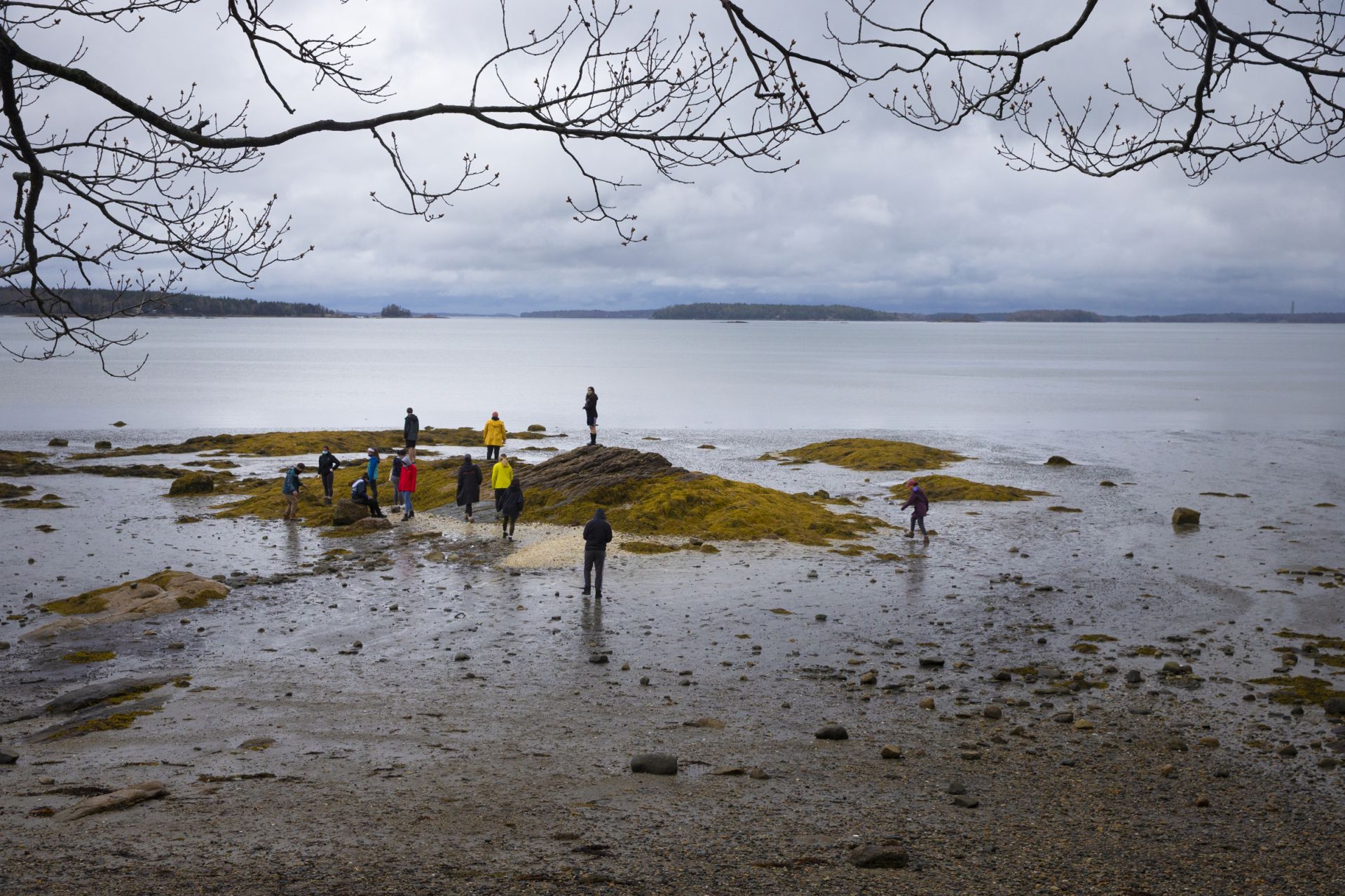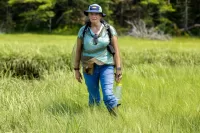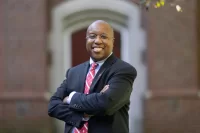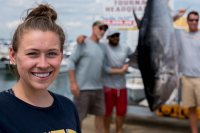
At Wolfe’s Neck Farm in Freeport, on a classic Maine spring day with slippery mud underfoot, Ben MacDonald ‘23 saw firsthand how messy scientific research can be.
As he and his other classmates in the Bates biology course “Biological Research Experience: Molecules to Ecosystems” looked on, a farm technician reached a gloved arm into a cow named Tina and took a sample of her feces, speeding along the natural process. Technically this method of collecting a sample is called “a fecal grab.”
While the overarching goal of the research is lofty — to determine whether giving cows a seaweed supplement might decrease the high levels of methane they burp out, thereby cutting back on a significant source of one of the greenhouse gases contributing to climate change — the fecal grab doesn’t tend to be elegant.
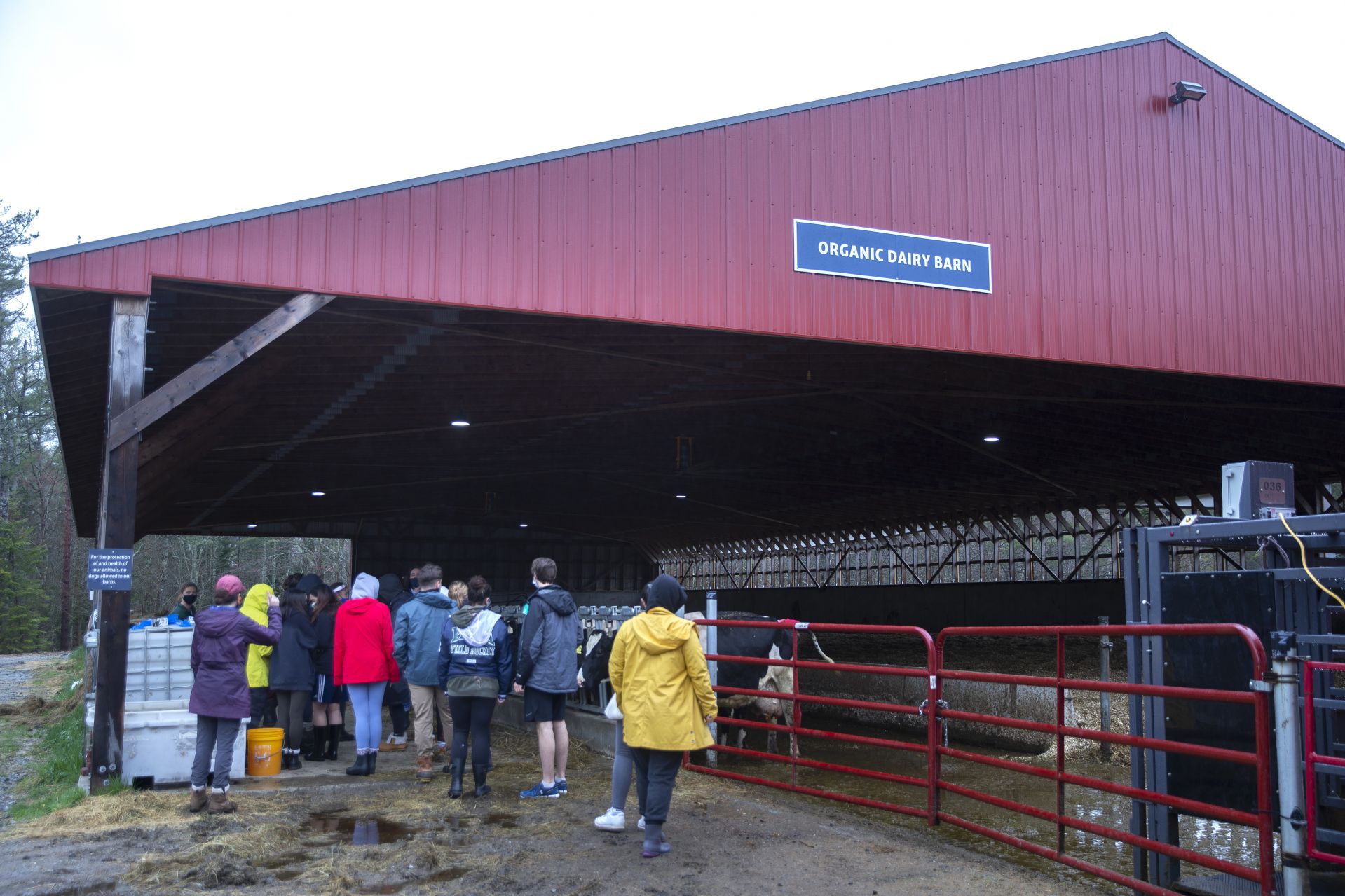
Tina is one of the dairy cows in the study, and if you want a fecal sample from her or any of the other 21 bovines in the study, you want one “as fresh as possible,” says Lecturer in Biology Louise Brogan, who devised the innovative Bates course as part of the department’s efforts to expose students to real-life research opportunities earlier in their careers through Course-based Undergraduate Research Experiences (CURE).
Because of the pandemic, Bates reworked its 2020–21 academic calendar into “modules” (think highly focused, shorter courses — and more of them) with Brogan teaching Bio 204 multiple times during the 2020-2021 academic year. BIO 204 had to be adaptable so other faculty (five professors total during the year) could rotate in and out, and because of physical distancing needs, there were two sections offered in each module.
“My role is to help onboard and support the new faculty coming through,” Brogan says. “I am never completely separated from it.”
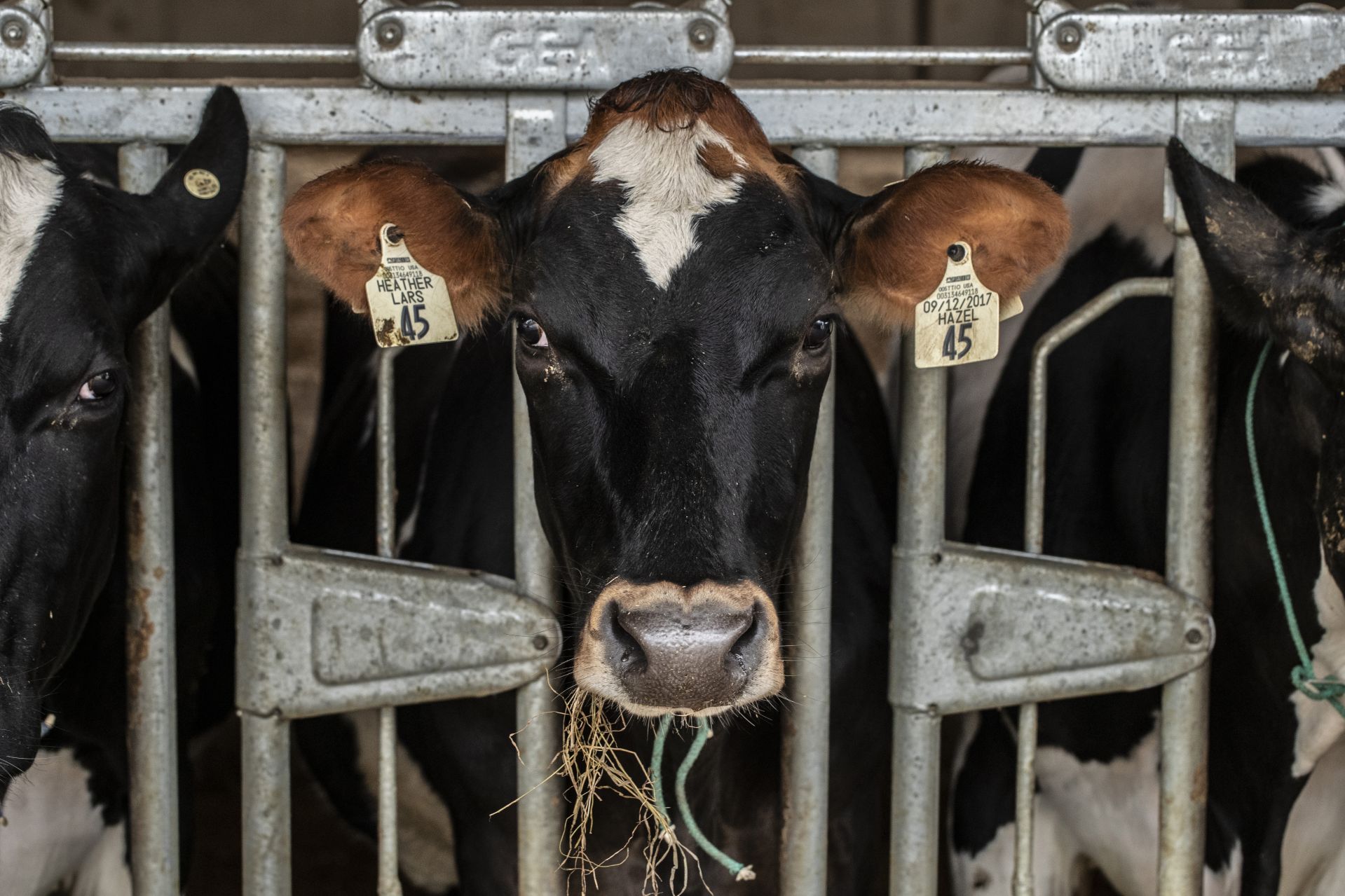
When she was brainstorming ideas for the course back in March 2020 with colleague April Hill, the Wagener Family Professor of Equity and Inclusion in STEM, Brogan’s goal was to fulfill the key components of the CURE principles. But as the weeks passed and it seemed the pandemic would complicate the coming academic year, she also had to consider a course that could work within the physical distancing requirements.
CURE dictated that this new course had to give students a sense of “what real science looks and feels like,” Brogan says. It also had to be an authentic inquiry “where even the instructors don’t know what the outcome is going to be.” Students needed to gain the experience of reading scientific literature, using discovery-based approaches to scientific inquiry, analyzing data, interpreting results, communicating in a disciplinary style, and working in teams.
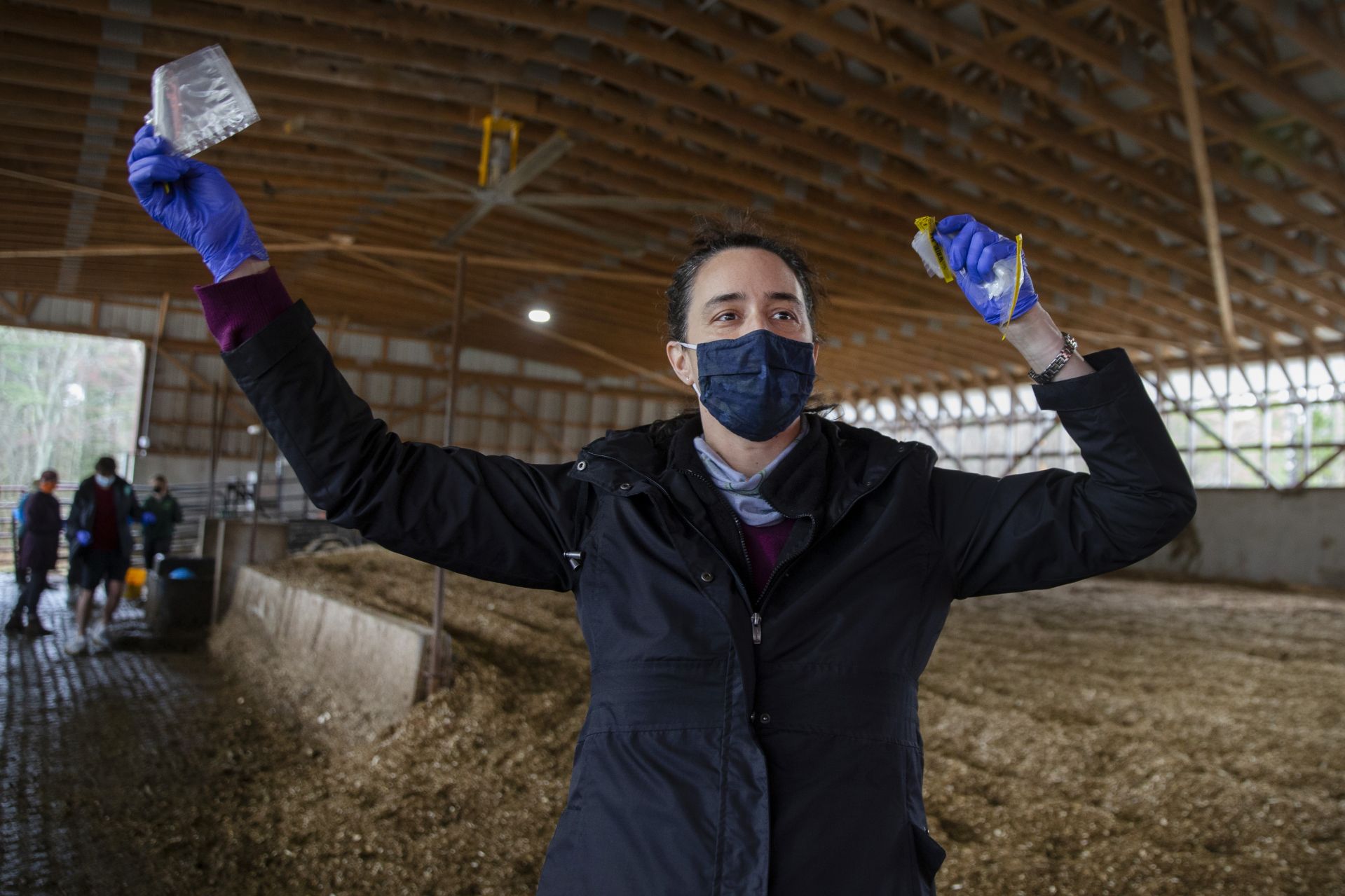
Because Brogan has scientific interest in gut microbiomes, she was eager to center the new course around a microbiome study. “That’s because a microbiome represents all the genetic material from microbes that live in an environment,” Brogan says. “The information we can get from sequencing the microbiome can tell us a lot about how an ecosystem functions.”
The pandemic meant the inquiry had to be relatively close to Lewiston; you could transport students places, but Brogan wanted to avoid long bus rides with students in close proximity.
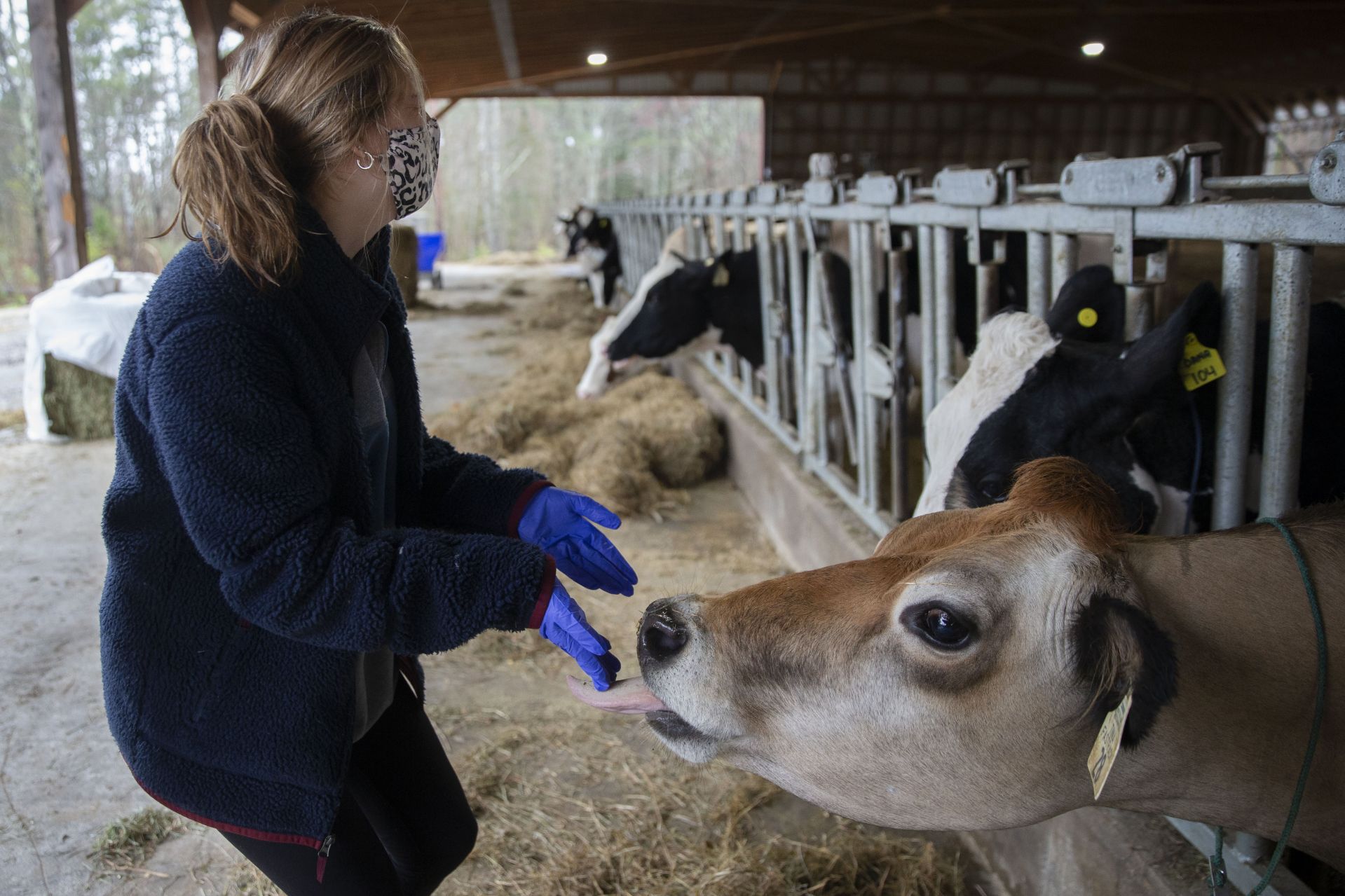
Brogan remembered seeing a press release from a few months earlier about a collaboration at Wolfe’s Neck — its formal name is Wolfe’s Neck’s Center for Agriculture & the Environment — between Bigelow Laboratory for Ocean Sciences, Colby College, the University of Vermont, and the University of New Hampshire investigating whether methane production from cows could be mitigated by feeding them algae-based supplements. That is, seaweed. The project is known as B3, shorthand for “Bovine BurpBusters” and is funded by the Shelby Cullom Davis Charitable Fund.
Cows, whether raised for meat or dairy, are the largest human-caused source of methane emissions, which in turn are the most potent of the greenhouse gases. The hypothesis (and hope) is that when cows eat seaweed, it could change the microbes in their guts, affecting the ones that generate the methane.
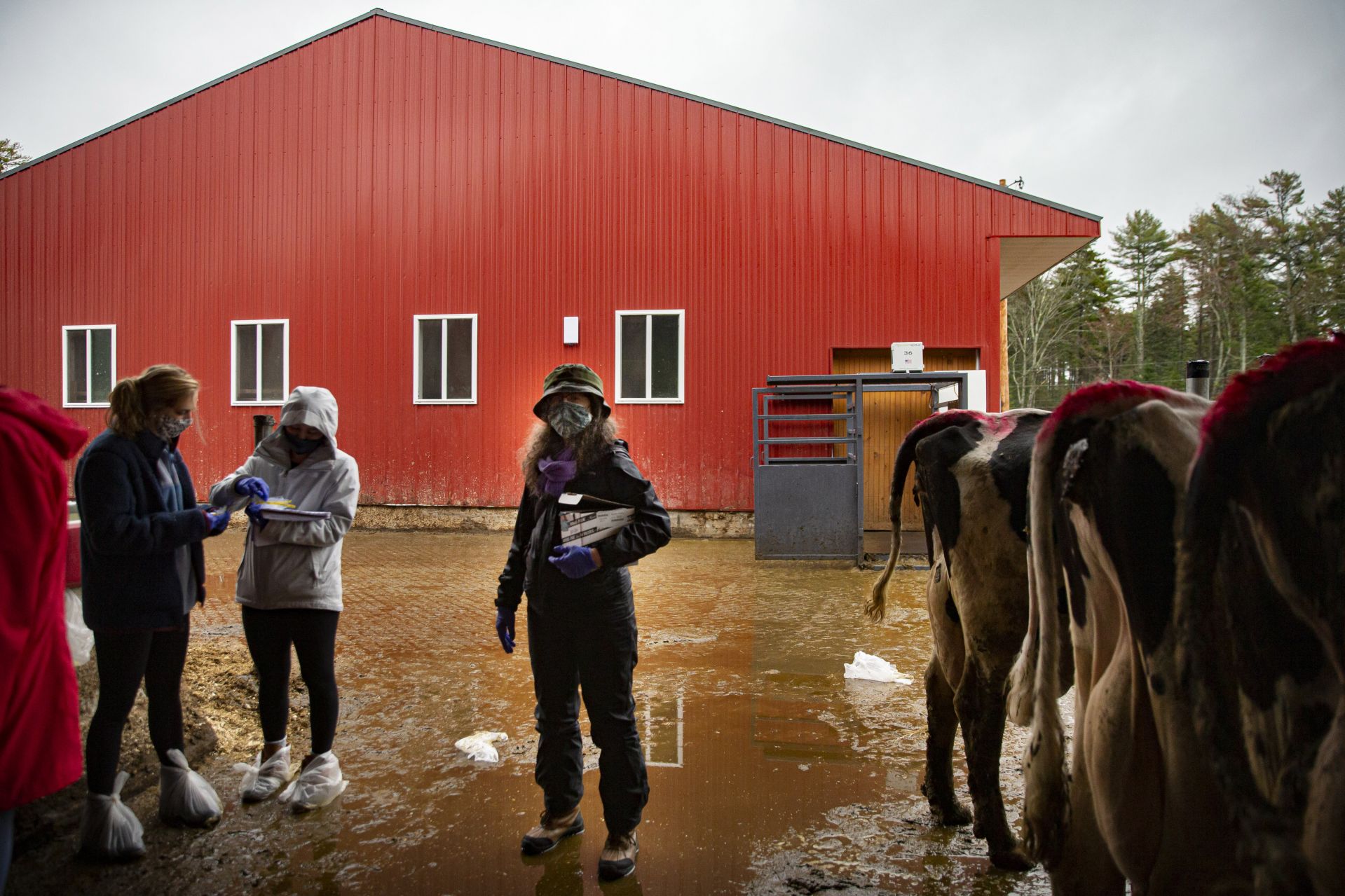
The project seemed like a perfect fit for what Brogan wanted. “So there are the microbes,” she says, living in the rumen compartment of a cow stomach. “And there is the ecosystem, and I know we can get ready, easy access to the gut microbiome. The fecal matter and the ruminal matter are distant from one another, but maybe what we can easily access might serve as a good reporter for what’s going on upstream.”
That is, the cow patties could be scientifically enlightening. Brogan reached out to Nichole Price, a benthic marine ecologist and senior research scientist at Bigelow Laboratory who heads up this interdisciplinary research project, to ask if there was any potential to collaborate. Brogan’s hope was that the Bates students “could generate some data.”
Bovine BurpBusters now includes Bates as a collaborator. Throughout the year, Bigelow representatives — Price, project coordinator Charlotte Quigley, and Ben Twining, another senior research scientist — have Zoomed into class meetings of Bio 204 to talk about the data and the Bovine BurpBusters program.
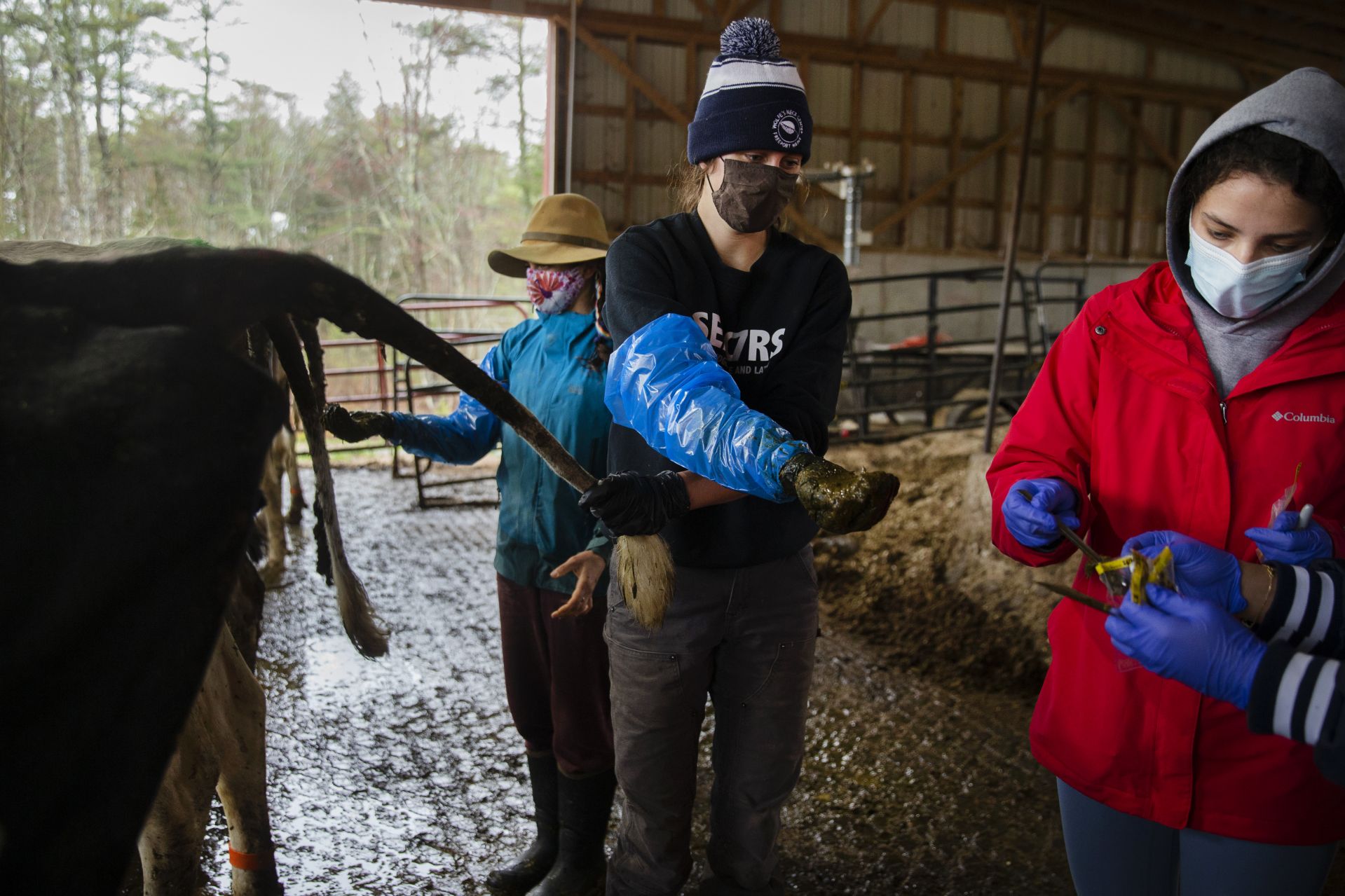
And the amount of data coming in from the student work is so copious “that we blew up Excel,” Brogan says. “Because apparently Excel can only accept one million rows of data.” (Science and Data Librarian Peter Schlax has been essential to creating “math magical” help, aka bioinformatic support, and solutions, Brogan says.)
For the students, the journey to data starts with gloves and efficiency at Wolfe’s Neck. Either a sample gets scooped up from the ground or the technician who does the fecal grab hands it off to a student. “Then once they had the sample in their hand it was just, ‘Let’s take three scoops at three different places and get it into the bag,’” says MacDonald, a psychology and chemistry major from Philadelphia on a pre-med track. “And then, you know, it’s onto the next cow.” Half of the cows in B3 are being fed a seaweed supplement, half are not.
What he didn’t expect — this wasn’t on the syllabus — is how messy the day at the farm would be, with many of these specimens ending up underfoot or splattering, as one might expect. “It’s probably better that Louise didn’t tell us some of the details of exactly what the collection process would look like,” MacDonald says with a grin. The students have watched a video in class before the field trip, but it turns out, it can’t quite convey the sights and smells of the real farm experience.
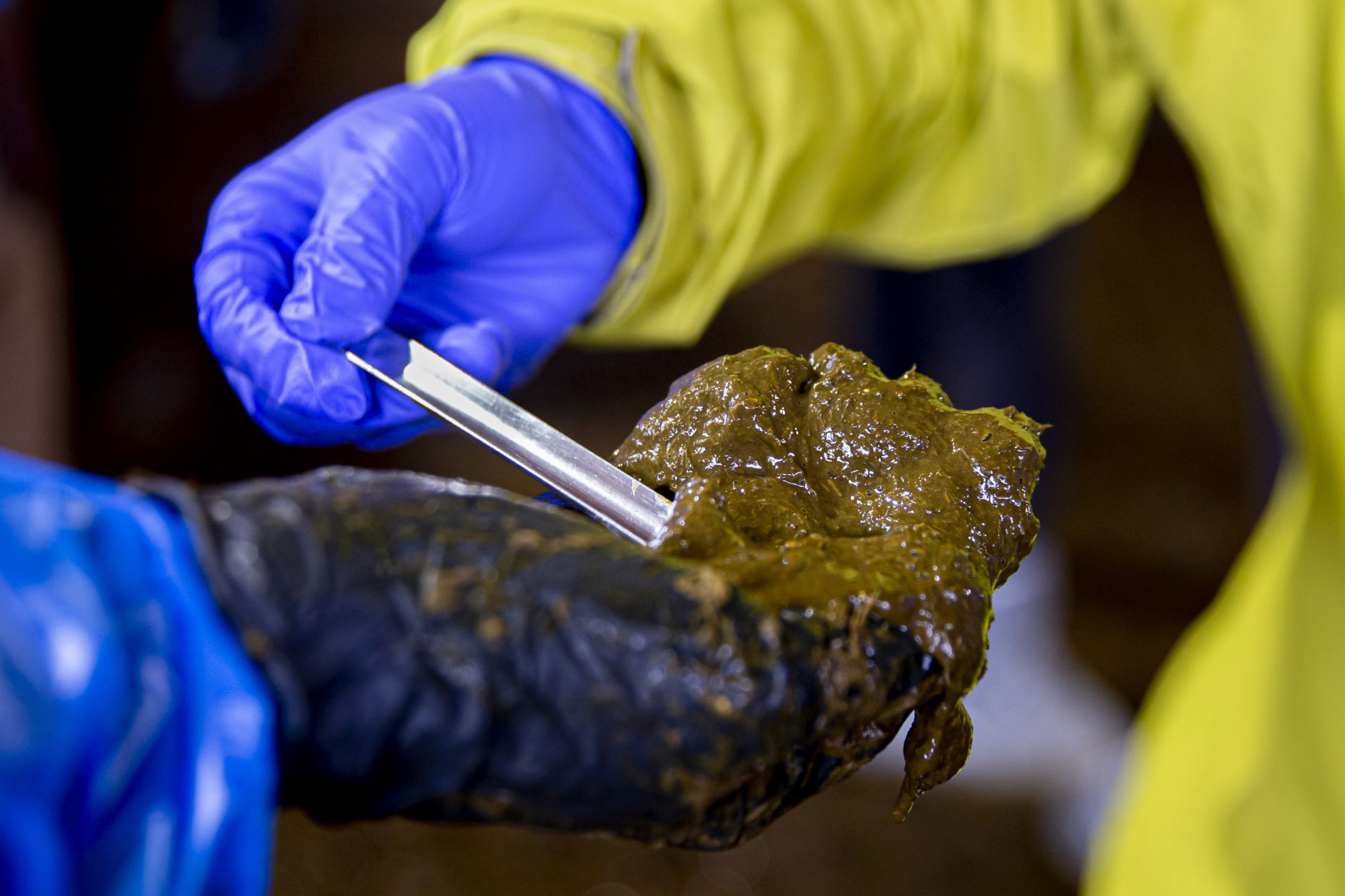
What MacDonald and his classmates got was an unfiltered look at how basic research can be. “It’s not always, you know, really fancy scientific methods and really expensive equipment,” MacDonald says. “Sometimes you are just collecting cow poop, you know?”
The samples get packed into bags, labeled, put onto ice and are brought back to the lab at Bates. “In the week thereafter we do a project called ‘Poop to PCR,’” Brogan says. They homogenize their samples and then extract microbial DNA. The device they use to sequence the microbiomes from the cows is so small it fits in the palm of a hand.
“We want to isolate pure, clean, high-quality DNA,” Brogan says, to see if the microbial population is shifting in any way as a result of a seaweed infused diet.
And while some of the other collaborators in B3 are also sampling, the work done by Bates students uses a different sequencing platform, which extends the data set that Bigelow and others are working with. It might even lead to further adaptations in the methodology of future sequencing.
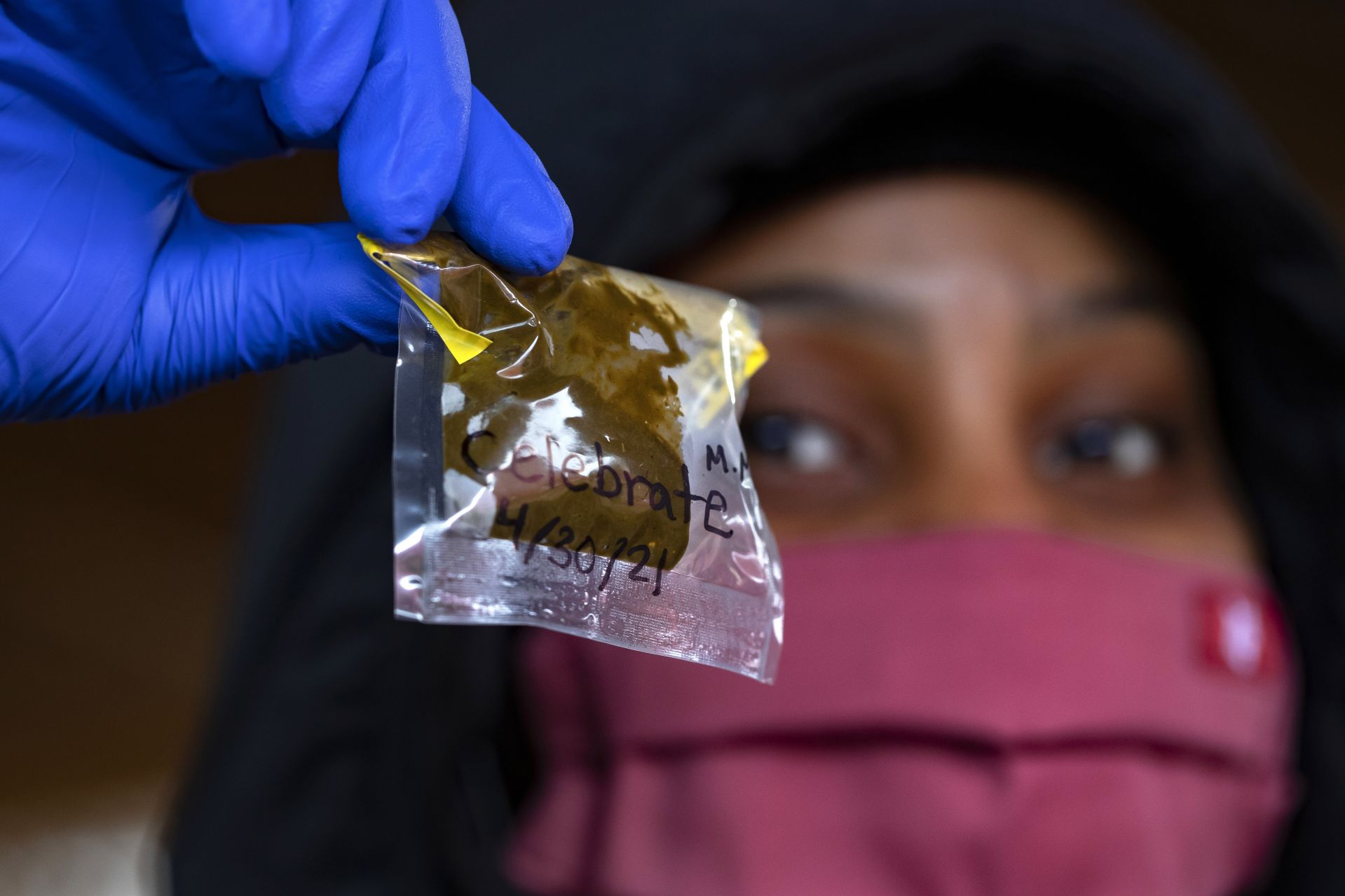
The collaboration is already providing an interesting educational experience, including lessons on how to communicate scientific findings. The Bates students have various hypothetical audiences to present for, including the Maine Climate Council and the state’s Department of Agriculture, Conservation, and Forestry. Next year they may present at the 2022 Mount David Summit and a subset of the group will also present results to a transdisciplinary team within the B3 group.
For MacDonald, the presentation was a key component of what he liked about the class. So was the connection to Bigelow scientists and research. “That’s what made 204 feel different,” he says.
The Zoom sessions with the Bigelow scientists, he adds, “puts into perspective that the research we’re doing is actually going to an institution that is publishing papers and trying to have a significant impact on the environment and the outcome of these cows’ diets.”
